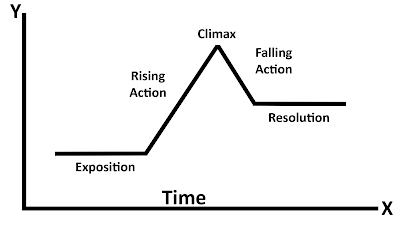Review - W4RR-i/o-RS
You’ve been strapped into a computer program. There’s no telling what it’s for or why you are there. Your best bet is to try to figure this all out. W4RR-i/o-RS is a strange little game that popped up on Steam recently. While the game itself is rather uninteresting, the concept behind it is intriguing. It claims to place the player in the position of a futuristic person who is running a computer program. You are given all of the information they are and left to figure out whatever you can.
Everything in the game occurs in a single spreadsheet. The player is given eight warrior robots of some sort with a few stats for each. It is then the player’s job to have them battle it out. This is done through one of three controls the player can use. They can specifically have one robot fight another, they can cause a random battle to occur, or they can move forward in time. If this were all that there was to the game, then this would be a rather pitiful piece. There is really very little strategy to W4RR-i/o-RS.
However, the actual gameplay is a pretext to the bigger question of the game. The Steam page description of W4RR-i/o-RS says that it “is an art-game about a 4th Millenium[sic] corporation ZN, which semi-automatically mines astral particles from simulated human minds. Though, as the player assumes a direct control over such a pawn, nothing of the surrounding lore is shown.” Basically, the developer is attempting to place the player in the position of a person who is being mined for something called “astral particles” (otherwise known as the illustrious Red Herring). By only showing the player what the avatar would see in the world, the developer forces the player to act from the character’s position, or achieving full immersion. I’ve actually touched on this concept in the past with my work on Question-based Immersion.
The big question is, how well does this work out in the game? It doesn’t really work at all when it comes down to it. The big problem here is that there is no significant information given to the player. When the gameplay is no longer the center stage and now the question of “what is this place?” is the central figure, there has to be some way to answer that question. The battle mechanics don’t give any indication of what is actually occurring outside of the player’s simulation. Neither does the text on the side given that I can’t discern any particular meaning from it (I checked it for replacement ciphers to no avail). W4RR-i/o-RS doesn’t give the player any information to solve the greater mystery of the game and, thereby, gives the player nothing to actually do.
So how does this compare to another piece that attempted a similar end goal? Sethian, from the developer Duang! Games, focuses on the player having to decipher an alien language in order to discover what really happened on the planet you are now on. Sethian places the player in the position of the main character in order to solve the puzzle (as I note in my work on Question-based Immersion) and it works. The reason for this is that, as the player solves the puzzle they are given more information about what is going on around them. They actually solve something.
In W4RR-i/o-RS, nothing is solved. For one, this gives the player no reason to continue playing as two minutes of the game gives you all the flavor of the next three hours. On top of that, W4RR-i/o-RS ends up not having anything to do with the original premise of the game, as written on the Steam Page. Without giving any information regarding what is actually happening, the actual gameplay is just a spreadsheet. The backstory is almost non-existent in the piece itself. You are given a premise at the beginning and expected to believe it despite the fact that nothing in the actual game world ever points back to that premise. So, in the end, W4RR-i/o-RS leaves the player with no meaningful gameplay and no question that can be found through play.
Overall, W4RR-i/o-RS is a really interesting idea that failed to deliver on any front. It tries to place the player in the position of the main character so that they can live the avatar’s experiences (see Question-based Immersion). However, none of the premise of the game, as described on the Steam Page, can be found through play. Without meaningful gameplay or a larger question that the player can answer, there is nothing left for the player to do in the game. In order for an experience like this to work, there has to be something for the player to do, which is almost always going to be discovering what is going on in the world around the player. As is, W4RR-i/o-RS gives little to any player other than someone who wants to see how this whole strange system works.




Comments
Post a Comment